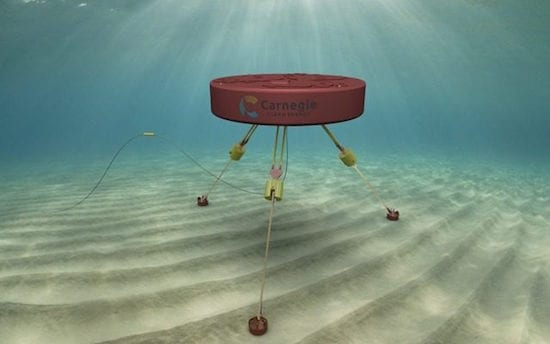Signs of hope have emerged for embattled wave energy developer Carnegie Clean Energy, after creditors on Wednesday voted unanimously to accept a restructuring plan to save the company and re-list it on the Australian Securities Exchange.
Carnegie went into voluntary administration last month, and appointed KordaMentha Restructuring to oversee the business and its fully owned solar and micro-grid subsidiary, Energy Made Clean.
A plan to resurrect the company’s core wave power business, and to sell or wind down Energy Made Clean, was soon revealed, alongside “in principle” funding support through company director and shareholder Grant Mooney and key stakeholder Asymmetric Credit Partners.
According to a media statement released on Wednesday, a version of that plan was put to a meeting of creditors by KordaMentha Restructuring partners Richard Tucker and John Bumbak, and won unanimous support.
The plan, outlined in a Deed of Company Arrangement (DOCA), provides for a recapitalisation of the company, a restructure of its balance sheet and a re-listing over the next three to months. The target for capital raising is up to $5 million.
Carnegie said that major shareholders and directors who had helped to keep the company financially afloat “before and after administration,” would swap debt for equity, with some debt being restructured and carried over to the re-listed company.
Unsecured creditors could expect a return of up to 10 cents in the dollar, the administrators said.
“This is a significant step for Carnegie as it strives to emerge from Voluntary Administration in a well-capitalised financial position, to continue its core business of transforming the global renewable energy market through its world leading wave energy technology,” said KordaMentha’s Tucker.
That technology is at the heart of a project that contributed to Carnegie Clean Energy’s undoing, when the Western Australia state government pulled out of a $16 million contract it had signed with the home-grown company to build a wave farm off the coast of Albany.
The proposed 1MW – and then potentially 20MW, and even possibly 100MW – Albany wave project was to use Carnegie’s CETO 6 technology, which is considered among the most advanced in the world, to tap what is said to be one of the most consistent wave power resources in the world.
The state government said its decision was informed by the “unexpected proposal to change Federal R&D tax concessions” which it said created an environment of uncertainty that had destabilised Carnegie’s finances.
On top of that, the company’s shares had been taking a hammering over what proved to be a less than successful foray into the solar and micro-grid business – after paying too much for Energy Made Clean.
At the start of March the company’s shares were suspended after Carnegie failed to produce its accounts on time, and then revealed a bottom line loss of $45 million as it took write downs on the value of its CETO wave technology, and its solar micro-grid business.
KordaMentha on Wednesday said that further updates would be provided during the process of Carnegie’s restructre, and that creditors could check the administrator’s website for more information and to see the report presented to creditors at the meeting.







